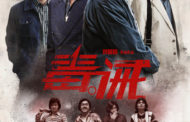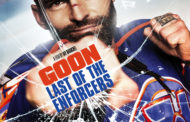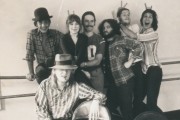 Ender’s Game (the novel) has sold millions of copies, is considered a hallmark of science fiction literature, has been listed on the “recommended reading list” of the United States Marine Corps., and has inspired over a dozen sequels and spinoffs. The author of the saga, Orson Scott Card, is considered one of the greatest science fiction writers of all time. That such a landmark book served as the inspiration of such a dull movie adaptation is not only disappointing, but disconcerting.
Ender’s Game (the novel) has sold millions of copies, is considered a hallmark of science fiction literature, has been listed on the “recommended reading list” of the United States Marine Corps., and has inspired over a dozen sequels and spinoffs. The author of the saga, Orson Scott Card, is considered one of the greatest science fiction writers of all time. That such a landmark book served as the inspiration of such a dull movie adaptation is not only disappointing, but disconcerting.
Now, to be fair it isn’t like Card didn’t warn them. Even though he served as a producer on this adaptation, he has repeatedly discussed the difficulty of adapting his book as a film since it was published nearly thirty years ago (nonetheless he wrote at least two script adaptations himself that were not produced). I happen to agree with him, but I would’ve given the filmmakers a pass for producing something halfway entertaining. However, Ender’s Game (the film) does not even reach those lowered standards. In order to make this complex novel work as a film this adaptation probably needed an out of the box approach, but writer/director Gavin Hood (X-Men Origins: Wolverine) didn’t do that. What we get is a “safe” adaptation that is so middle-of-the-road that it ought to paint traffic lines as a public service.
The story is set decades after Earth defeated an alien invasion by the ant-like Formics. Since then the International Fleet has been training children — who can process information faster than adults — to lead a strike against the Formics’ home planet. Andrew “Ender” Wiggin (Asa Butterfield) is an extremely focused and intelligent but inherently violent child who draws the attention of two commanders, Colonel Graff (Harrison Ford) and Major Gwen Anderson (Viola Davis). The pair take Ender from his family — including from his beloved sister Valentine (Abigail Breslin) and violent older brother Peter (Jimmy Pinchak) — to Battle School and Command School, where a series of challenges will determine if he is the one that will lead the fleet into battle. Along the way Ender struggles with harnessing his violent tendencies and learning how to become the leader Graff believes him to be.
It’s unfair to compare the film version of Ender’s Game to Star Wars, but a point must be made. Imagine if the first hour and a half of Star Wars was devoted to Luke’s Jedi training with Obi-wan Kenobi instead of just the few minutes we see on the Millennium Falcon. That’s precisely what the first ninety minutes of Ender’s Game is like. Training sequences might be really interesting spread over the first 200 pages of the novel because the reader is inside Ender’s head, but they’re incredibly repetitive on screen. By the time Ben Kingsley‘s character finally shows up (reuniting with his Hugo co-star Butterfield) and he says that he will also be training Ender one might wonder if he’s earning his doctorate in space-fighting. There’s a reason the Rocky films kept the training montages to the length of “Gonna Fly Now” or a Survivor tune.
These sequences might be more tolerable if the special effects were good, but frankly they aren’t anything special. It’s typical space movie CGI, and since most of the battle scenes are simulations everything looks like a video game that I’d probably rather be playing, not watching. Plus, the fact that the audience is aware that almost everything we see is a training exercise removes the element of danger. What’s the worst that can happen, Ender screws up the simulation and gets sent home? He makes it clear he’d rather be home anyway!
Credit goes to Ford, Davis and Kingsley for strong performances (I’d like to say the same for Hailee Steinfeld as Petra Arkanian, but she is stuck in a role in which she can’t decide if she’s a damsel in distress or not), and though Butterfield’s character is sometimes insufferable he does a good job of juggling a character that you alternately want to root for or smack across the face. Sure, children might process information better than adults in this universe, but as Ender demonstrates they’re emotionally immature. In fact, the only times I ever got on his side was when he was up against someone even more insufferable, like his Napoleon-complex-on-eleven rival Bonzo (Moisés Arias).
But it’s also harder to root for Ender because the audience never learns much about the Formic adversaries, so they end up being little more than generic “bad guys” in the context of the film until the movie’s final confusing minutes. To use another Star Wars comparison, imagine if the audience doesn’t see the intimidating figures of Darth Vader or Grand Moff Tarkin or even the stormtroopers for nearly the entire movie. Decades of moviemaking has shown us that an action or adventure film is only as good as its villains. There’s a reason why the Lord of the Rings movies went to great lengths to show Sauron despite the fact that he hardly appears in the novel: film is a visual medium, and it’s hard to get emotionally invested in a threat when we can’t see it and don’t hear much of it beyond Harrison Ford’s character throwing around devastating-sounding casualty numbers. Ford can tell us a dozen people died or a billion in his senior citizen gravely voice, but what difference does it make?
I am sure OddLot Entertainment and the half-dozen other production companies involved with producing this film are hoping that Ender’s Game will prove to be the next Hunger Games or Harry Potter franchise, and while I think kids will enjoy the first ninety minutes or so this won’t have the banner appeal of those franchises despite the success of the novel. It’s not as “kiddie” as Star Wars: Episode I – The Phantom Menace, but it’s not even on the level of TRON: Legacy. For such an acclaimed novel, there’s nothing that isn’t disappointing about that.
Rating: Though kids will likely enjoy it, the film adaptation of Ender’s Game is probably too dull for anyone old enough to appreciate much better sci-fi movies (4/10).















Recent Comments